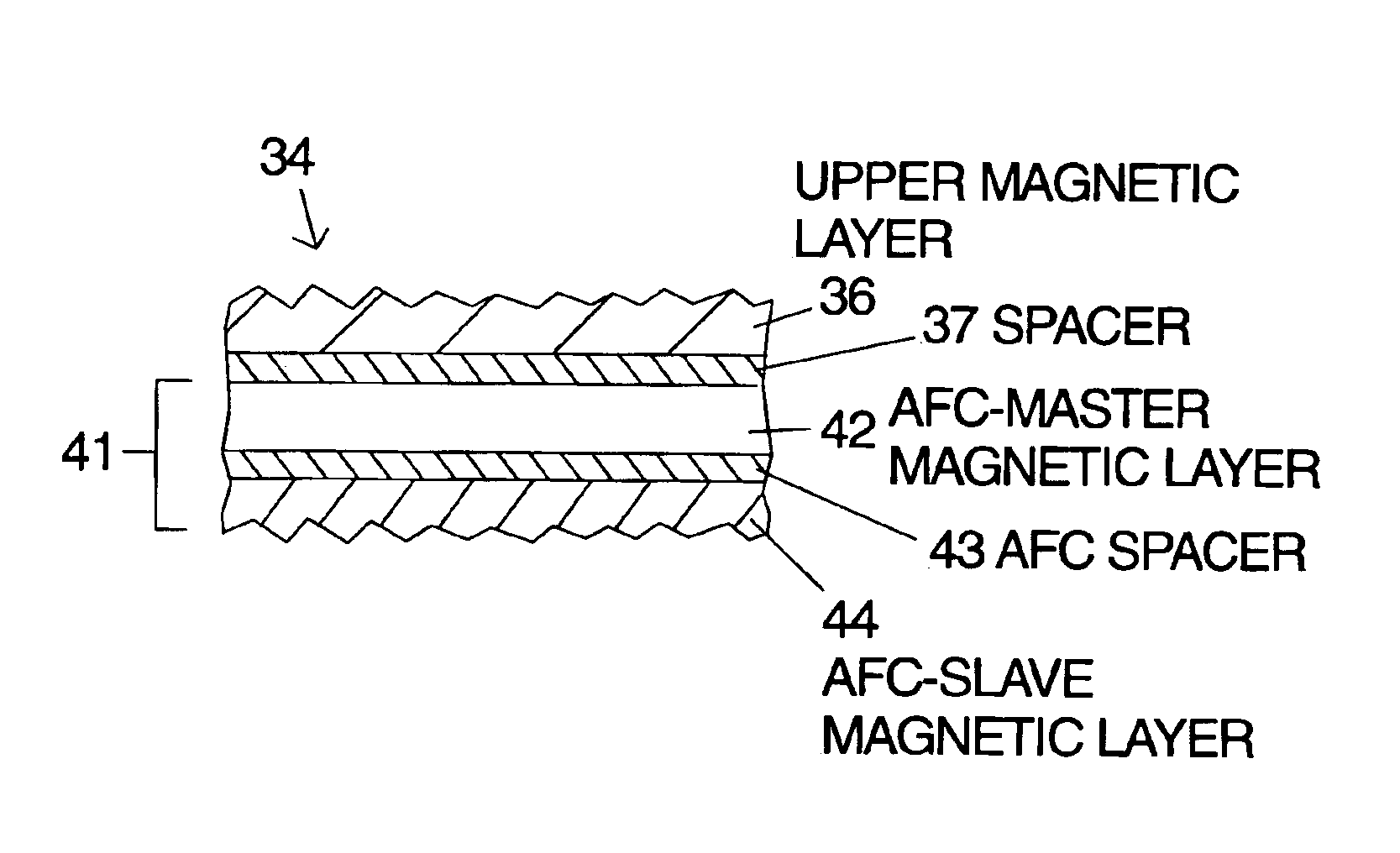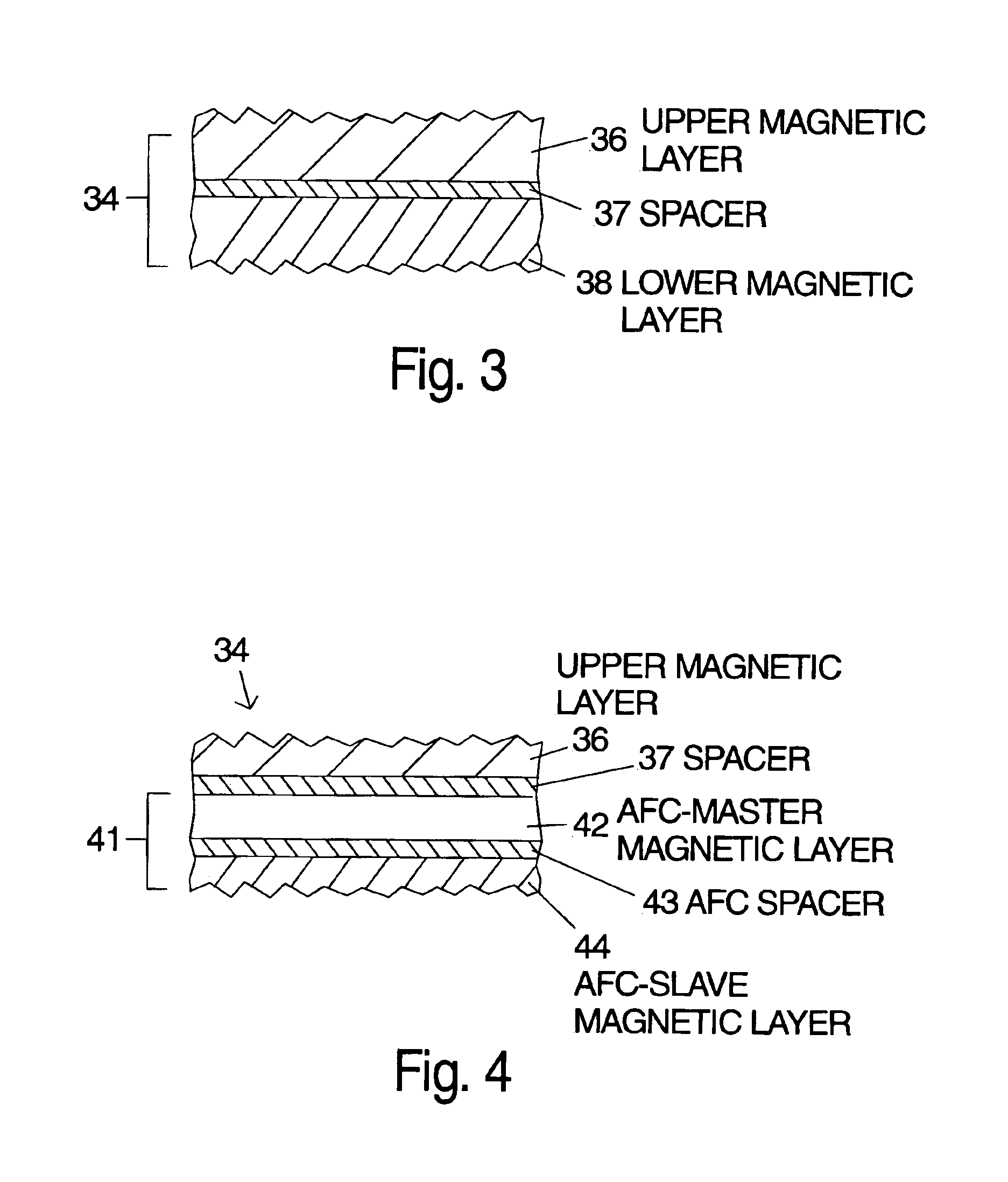Magnetic anisotropy adjusted laminated magnetic thin films for magnetic recording
a magnetic thin film and anisotropy adjustment technology, applied in the field of magnetic thin film media, can solve the problems of too large to be written by a practical write head, the field of recording head field is reduced, and the distance from the recording head is increased.
- Summary
- Abstract
- Description
- Claims
- Application Information
AI Technical Summary
Benefits of technology
Problems solved by technology
Method used
Image
Examples
first embodiment
[0019]The layer structure shown in FIG. 2 can be used with a variety of magnetic layer stacks 34. For example, two or more laminated magnetic layers can be used and antiferromagnetically coupled layers structures can be substituted for any or all of the magnetic layers. One embodiment of the magnetic layer stack 34 is composed of a plurality of layers which are further illustrated in FIG. 3. a layer stack 34 according to the invention is a laminated structure including an upper magnetic layer 36 (the magnetic layer nearest to the surface of the disk and, therefore, the head), a spacer layer 37 and a lower magnetic layer 38. The material for the lower magnetic layer 38 is selected to have a lower magnetic anisotropy than the upper magnetic layer 36. The magnetic anisotropy can be adjusted primarily by changing the atomic percentage of platinum in a cobalt based magnetic alloy such as CoPtCr, CoPtCrTa or CoPtCrB. A higher atomic percentage of platinum yields higher magnetic anisotropy...
second embodiment
[0020]the layer stack 34 is illustrated in FIG. 4. As noted above an antiferromagnetically coupled layer structure can be substituted for any or all of the magnetic layers in a laminated layer stack. The embodiment in FIG. 4 has an antiferromagnetically coupled layer structure 41 substituted in place of the lower magnetic layer 38 of FIG. 3. An antiferromagnetically coupled layer structure 41 according to the invention has at least three distinct layers with the magnetic layers antiferromagnetically coupled through the nonmagnetic spacer layer. The two magnetic layers of the antiferromagnetically coupled layer structure 41 will be referred to as AFC-master magnetic layer 42 for the upper one and AFC-slave magnetic layer 44 for the lower one. Each of these layers is a ferromagnetic material of the type used in the prior art of thin film disks. Examples of materials suitable include CoCr, CoCrB, CoCrTa, CoPtCr, CoPtCrTa and CoPtCrB. The thickness of the AFC-slave magnetic layer 44 mus...
PUM
| Property | Measurement | Unit |
|---|---|---|
| thickness | aaaaa | aaaaa |
| thickness | aaaaa | aaaaa |
| thickness | aaaaa | aaaaa |
Abstract
Description
Claims
Application Information
 Login to View More
Login to View More - R&D
- Intellectual Property
- Life Sciences
- Materials
- Tech Scout
- Unparalleled Data Quality
- Higher Quality Content
- 60% Fewer Hallucinations
Browse by: Latest US Patents, China's latest patents, Technical Efficacy Thesaurus, Application Domain, Technology Topic, Popular Technical Reports.
© 2025 PatSnap. All rights reserved.Legal|Privacy policy|Modern Slavery Act Transparency Statement|Sitemap|About US| Contact US: help@patsnap.com



